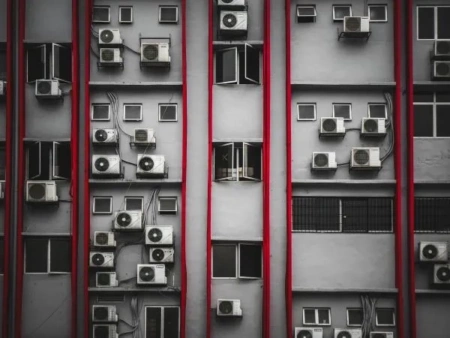Latest News on Air Filters
Learning about the different types of air filters is more often based on understanding each one's ability to filter various air-borne pollutants that are found in your home. This ability will depend on certain factors such as the materials type and layout used in the air filter. For example, an air filter with tightly woven and layered material has better filtering ability as compared to an air filter with thinner material.Here are the different types of air filters that are available in the market.
1. High efficiency particulate arrestance (HEPA) Air Filters
Dubbed as one of the most efficient HVAC filter types, HEPA filters can remove air-borne allergens and pollutants that are mostly present at home by up to 99.97 percent. These include bacteria, smoke particles, viruses, pet dander, pollen, mold, and dust.
2. UV Light Air Filters
This type of air filter is best in eliminating disease-causing germs and pollutants that are present inside your home. Through short-wave UV light and germicidal radiation from the UV lamp, it is able to disinfect air as it passes through, thereby killing viruses and bacteria along the way.
3. Carbon Air Filters
This type of air filter works by activating carbon through oxygen treatment. This treatment causes the carbon's pores to open and become highly absorbent. The activated carbon found in carbon air filters are designed to trap gasses and chemicals as well as filter cigarette smoke. It also absorbs and neutralizes the gasses and odors every time the air passes through the filter. Air filters with activated carbon are perfect for environments where removing chemicals from the air is a top concern.
4. Ionic Air Filters
Otherwise known as air ionizers, this type of filter needs voltage in order to charge air molecules. Designed to produce negatively charged ions, which is more popularly known as anions, ionic air filters attract particles found in the air, similar to static electricity. When these particles and anions make contact, the former is deionized and then removed from the air stream.
5. Fiberglass Air Filters
This type is made up of layered fiberglass fibers which are laid over each other in order to form the filter media. Typically, the fibers are reinforced with a metal grating which supports the fiberglass so as to protect it from collapse and failure.
6. Polyester and Pleated Air Filters
These air filters are similar to fiberglass. However, they are known to have a superior dust-stopping ability as well as a higher resistance to airflow.
The Benefit of Air Filters
Air filters, as the name indicates, filter your air. They are the key element of a house's air filtering and filtration system. They help in maintaining healthy indoor air quality by aiding eliminate particular airborne contaminants that are commonly found in your house's air supply. These can consist of dirt, mold, dust, animal fur, bacteria or other microorganisms. Apart from keeping dust and pollen out, they similarly help in keeping larger particles from entering your a/c system, thereby protecting it from being harmed.In time, this act of filtering blocks your system which leads to having filthy air filters. Clogged filters push your system to work tougher and use up more energy. This leads to greater utility expenses due to poorer air quality since locations at home are not getting their required airflow. As a result, your home's level of comfort is decreased. If the situation continues and your air filter is left untouched or ignored, it will cause your system to get too hot or freeze up. It is therefore suggested that air filters are changed regularly, at least every 90 days.
A lot of homes have just one air filter. Whatever size or type you utilize at home, keep in mind that all air filters are made to fill those primary functions.

The Top 3 Benefits of Air Filters at Home
1. It decreases the presence of dust.Air filters keep dust and debris from building up on the mechanical areas of your air conditioning and heating unit. Pleated filters designed with high effectiveness included a big surface area which enables them to have a significant level of dust-holding capability. These pleated filters trap and control numerous grams of dust, obstructing it from blowing through your duct system to work back into the air that you're breathing before it settles on your home's surface areas. It is advised that a minimum MERV ranking of 8 is needed on a house air filter which is enough to control the level of dust on average.
2. It protects your heating and cooling system.
In order to preserve your system and ensure that it will function well for as long as you desire it to, is by making use of an air filter that fits properly along with one that is altered routinely. When your air filter is appropriately preserved, your home can enjoy an appropriate circulation rate of airflow, making it simpler for you to change your a/c system's hot or cool settings to your preferred temperature. With regular maintenance, your heating and cooling system is secured from dust build-up especially on parts such as the motor, fan blade, coil, ductwork and vents.
3. It enhances indoor air quality.
It is necessary for anyone to preserve a great indoor air quality in your home considering that typically, an individual spends 90 percent of his time in indoor areas. Compared to the outside level, indoor areas have concentrations of toxins that are 2 to 5 times greater. If anybody in the house is experiencing severe allergic reactions and is sensitive to particular contaminants and particulates, maintaining a good indoor air quality ought to be a main concern.